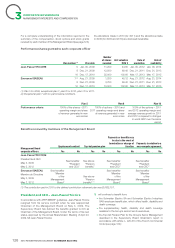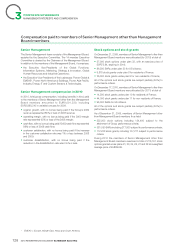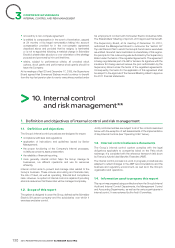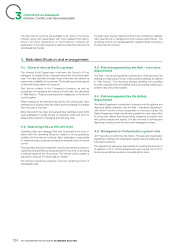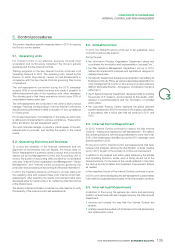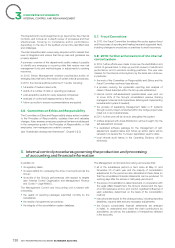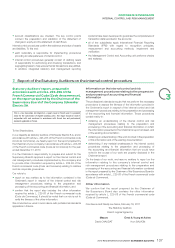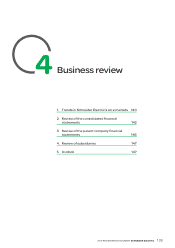APC 2010 Annual Report Download - page 138
Download and view the complete annual report
Please find page 138 of the 2010 APC annual report below. You can navigate through the pages in the report by either clicking on the pages listed below, or by using the keyword search tool below to find specific information within the annual report.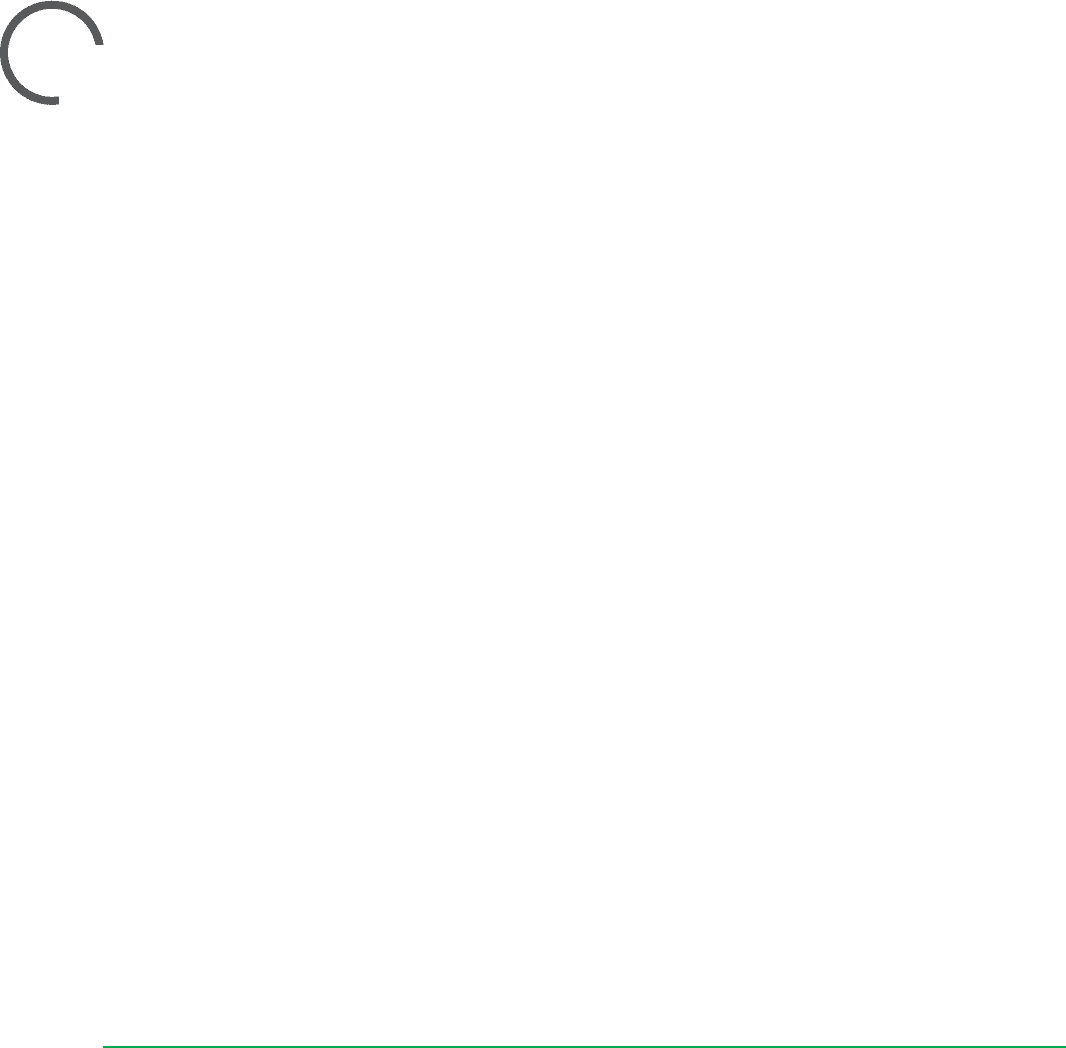
CORPORATE GOVERNANCE
3INTERNAL CONTROL ANDRISKMANAGEMENT
The Department’s audit assignments go beyond the Key Internal
Controls, and include an in-depth review of processes and their
effectiveness, focusing on compliance and/or performance,
depending on the size of the audited unit and the identifi ed risks
and challenges.
The internal auditors also review newly acquired units to assess their
level of integration and ensure that Group rules and guidelines are
properly applied.
A summary overview of the department’s audits makes it possible
to identify any emerging or recurring risks that require new risk
management tools and methodologies or adjustments to existing
resources.
In 2010, Senior Management ordered unscheduled audits on
emerging risks that led to the revision of certain internal procedures.
In 2010, the internal auditors performed 17audits, including:
•full audits of medium-sized units;
•audits of a number of risks or operating processes;
•post-acquisition audits for newly acquired companies;
•analyses of control self-assessments by the units;
•follow-up audits to ensure recommendations are applied.
5.6. Committee on Ethics and Responsibility
The Committee on Ethics and Responsibility steers action in relation
to the Principles of Responsibility, updates them and validates
changes. It also answers employee questions that are not addressed
in the companion guide to the Principles of Responsibility, or that
employees’ own managers are unable to answer.
(see “Sustainable development framework”, Chapter 2 § 2)
5.7. Fraud Committee
In 2010, the Fraud Committee formalised the policy against fraud
and the process of reporting and treating fraud and suspected fraud,
including changes in procedures or practices to avoid recurrence.
5.8. 2010: further enhancement of the internal
control system
In 2010, further efforts were made to improve the identifi cation and
control of general risks, to step up periodic reviews of results and
performance, and to enhance auditing practices. The year was
marked, for the internal control system, by the items set out above,
in particular:
•the work of the Committee on Responsibility and Ethics and the
Fraud Committee continued (see above);
•a process involving the systematic reporting and analysis of
cases of fraud detected within the Group was established;
•internal control self-assessment questionnaires were sent out
to cover 90% of the Group’s consolidated revenue (training
managers in internal control practices, defi ning and implementing
remedial action plans if needed);
•the process of separating management tasks in IT systems
through a pilot project conducted within the bridge project was
rolled out on an industrial scale.
In 2011, further work will be done to strengthen the system:
•entities acquired with Areva Distribution will be brought into the
self-assessment process;
•a dedicated software package for the management of self-
assessment questionnaires and follow-up action plans will be
ushered in to replace the “in-house” application used to date;
•local internal audit teams in the Operating Divisions will be
reinforced.
6. Internal control procedures governing the production and processing
ofaccounting and financial information
In addition to:
•its regulatory tasks;
•its responsibility for overseeing the close of accounts across the
Group;
•its audits of the Group’s performances with respect to targets
(see “Internal Control Organisation and Management: Finance
and Control – Legal Affairs”).
The Management Control and Accounting unit is tasked with
overseeing:
•the quality of reporting packages submitted monthly by the
subsidiaries;
•the results of programmed procedures;
•the integrity of the consolidation system database.
The Management Control and Accounting unit ensures that:
•all of the subsidiaries perform a hard close at May 31 and
November 30 of each year and the majority of consolidation
adjustments for the period are also calculated at these dates so
that the consolidated fi nancial statements can be produced 16
working days after the annual or half-yearly period-end;
•the scope of consolidation is determined and, in cooperation with
the Legal Affairs Department, the Group’s interest and the type
of control (exclusive control, joint control, signifi cant infl uence) of
each subsidiary, determined on the basis of the consolidation
method;
•instructions are issued for the closing process, including reporting
deadlines, required data and any necessary adjustments;
•the Group’s consolidated fi nancial statements are analysed
in detail, to understand and check the main contributions by
subsidiaries, as well as the substance of transactions refl ected
in the accounts;
2010 REGISTRATION DOCUMENT SCHNEIDER ELECTRIC136


